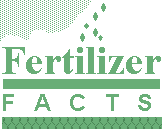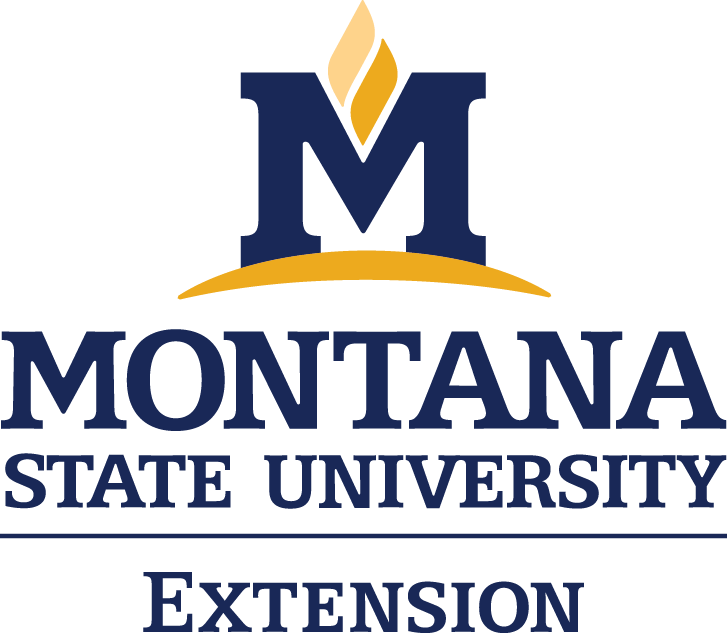Fertilizer Facts

Fertilizer Facts provide summaries of research-based information generated from Montana State University Agricultural Experiment Station and Extension Service scientists. Our goal is to develop the most accurate information possible concerning fertilizer use and soil management, so that profits can be maximized, while protecting environmental quality on the many diverse soils and climatic conditions in Montana. As research projects are completed, these scientists develop brief factual summaries of their accomplishments, as Fertilizer Facts. Most of these research projects are funded by the Montana Fertilizer Advisory Committee (MFAC website)
Edited by Clain Jones, Jeff Jacobsen, Kathrin Olson-Rutz, and Kaleb Baber
- No. 1. Montana Fertilizer Check-Off Programs
- No. 2. Nitrogen Utilization by Malting Barley Under Varying Moisture Regimes by Inskeep et al.
- No. 3. Winter Wheat Response to Chloride Fertilizers by Engel
- No. 4. Winter Wheat Response to Available Nitrogen and Water by Engel
- No. 5. Petiole Sap Analysis - A Quick Tissue Test for Nitrogen in Potatoes by Westcott
- No. 6. Petiole Tissue Testing for Nitrogen Management in Potatoes by Westcott
- No. 7. Grass Response to N Fertilizer by Jacobsen et al.
- No. 8. Nitrogen Fertilizer Materials by Jacobsen and Lorbeer
- No. 9. Nitrates in Soil and Ground Water Under Irrigated Crops by Eckhoff
- No. 10. Nitrogen and Harvest Date Interactions in Sugarbeets by Eckhoff
- No. 11. Grain Yield and Protein Response to Late-Season Nitrogen in Irrigated Spring Wheat by Westcott et al.
- No. 12. Flag Leaf Diagnosis of Grain Protein Response to Late-Season N Application in Irrigated Spring Wheat by Westcott et al.
- No. 13. Residual Soil Nitrate Responses to Early and Late-Season Nitrogen Application in Irrigated Spring Wheat by Westcott et al.
- No. 14. Safflower Seed Yield and Oil Content as Affected by Water and N by Engel and Bergman
- No. 15. Response of Oat to Water and Nitrogen by Engel
- No. 16. Correcting Physiologic Leaf Spot Damage in 'Redwin' and Other Winter Wheat Cultivars by Engel
- No. 17. Predicting Spring Wheat Yield and Protein Response to Nitrogen by Jackson
- No. 18. Spring Wheat Response to Potassium and Chloride by Jackson
- No. 19. Fertilizing Spring Wheat with Phosphorus by Jackson et al.
- No. 20. Economic Value of Late-Season N Applications to Irrigated Spring Wheat by Westcott et al.
- No. 21. Post-Harvest Evaluation of N Management for Spring Wheat Using Grain Protein by Engel et al.
- No. 22. Canola Nutrient Management by Jackson
- No. 23. Capturing the Genetic Protein Potential in Winter Wheat by Lorbeer et al.
- No. 24. Nitrogen Fertilization of Dryland Malt Barley for Yield and Quality by Jackson
- No. 25. Nitrogen Requirements and Yield Potential of Spring Wheat as Affected by Water by Engel et al.
- No. 26. Fertilizing Winter Wheat with Nitrogen for Yield and Protein by Jackson
- No. 27. Fertilizer Use on Dryland Perennial Forages by Wichman
- No. 28. Response of Irrigated Durum to Applied Nitrogen by Eckhoff
- No. 29. Effects of Dust Control Coatings on Phosphorus Fertilizer Availability and Crop Yield by Jones and Jackobsen
- No. 30. Response of Durum and Spring Wheat to Applied Nitrogen and Sulfur by Eckhoff
- No. 31. Barley Response to Phosphorus Fertilization under Dry Conditions by Jones et al.
- No. 32. Effect of Humic Acid on Phosphorus Availability and Spring Wheat Yield by Jones et al.
- No. 33. Estimating Straw Production of Spring and Winter Wheat by Engel et al.
- No. 34. Post-harvest Evaluation of N Management for Winter Wheat using Grain Protein by Engel et al.
- No. 35. Row Configuration and Nitrogen Application for Barley/Pea Intercropping by Chen et al.
- No. 36. Soil Fertility Status after a 4-Year Transition Period to Diversified No-Till and Organic Systems by Jones and Miller
- No. 37. Response of Spring Wheat Yield and Protein to Row Spacing, Plant Density, and Nitrogen Application in Central Montana by Chen and Neill
- No. 38. Spring Pea, Lentil, and Chickpea Response to Phosphorus Fertilizer by Chen et al.
- No. 39. Accuracy of Quick Soil Nitrate Tests in Montana by Allison and Jones
- No. 40. Is Phosphorus Fertilizer Needed in Winter Pea and Lentil Production in Central Montana? by Wen et al.
- No. 41. Winter Wheat Response to Nitrogen and Sulfur Fertilization by Jackson and Engel
- No. 42. Flax Response to Nitrogen and Phosphorus Fertilization by Jackson
- No. 43. Fine-tuning Applied Nitrogen Rates for Sprinkler and Flood Irrigated Sugarbeet Production by Jackson and Flynn
- No. 44. Soil Nitrous Oxide Emissions from a Continuous Wheat Cropping System in Montana by Engel et al.
- No. 45. Cropping Sequence Effect of Pea and Pea Management on Spring Wheat by Miller et al.
- No. 46. Sap Analysis for Diagnosis of Nitrate Accumulation in Cereal Forages by Westcott et al.
- No. 47. Tillage System Effect on Vertical Phosphorus Stratification and Phosphorus Uptake of Winter Wheat, Winter Pea, and Spring Pea by Jones et al.
- No. 48. Cultural Practices for Producing Dryland Malt Barley: Sulfur Fertilizer Rate by Jackson
- No. 49. Response of Camelina to Nitrogen, Phosphorus, and Sulfur by Jackson
- No. 50. Effect of Granular Urea Placement on Nitrous Oxide Production from a Silt Loam Soil by Engel et al.
- No. 51. Nitrogen Cycling from Pea Forage to Wheat in No-Till Systems by Miller et al.
- No. 52. Cultural Practices for Producing Dryland Malt Barley: Planting Rate by Jackson
- No. 53. A Tool to Determine Economically Optimum Nitrogen Rates for Small Grains by Jones et al.
- No. 54. Using Zinc to Reduce Cadmium in Durum Grain by Eckhoff
- No. 55. Changes in Soil Nitrate-N Levels from Late Summer to Early Spring in Montana by Jones et al.
- No. 56. Evaluation of Nitrate Potential in Hay from Five Cereal Forage Species by Westcott et al.
- No. 57. Response of Corn to Nitrogen Fertilizer Rate and Top-dressing by Westcott and Kephart
- No. 58. Effect of Tillage on Nitrogen Cycling from Annual Legume Green Manures by Burgess et al.
- No. 59. Ammonia Loss from Urea Surface-applied to Cold Soils by Engel and Jones
- No. 60. Mitigation of Ammonia Loss from Urea Applied to Moist Soils by Agrotain® by Engel and Jones
- No. 61. Improving Annual Legume Green Manure Management by Optimizing Seeding Rates and Termination Timing by McCauley et al.
- No. 62. Removed due to uncontrolled factors influencing the results.
- No. 63. Effect of Diversified Crop Rotations and N Rates on Soil Organic Matter and Nutrient Levels by Jones et al.
- No. 64. N effect on Crop-Weed Interactions in MT Cereal Production by Jha and Kumar
- No. 65. Spatial Optimization of N application for Wheat by Barroso et al.
- No. 66. Pulse Crop Improves Early N Uptake, Growth and Yield of WW in No-till by Chen
- No. 67. Soil N Cycling Affected by Tillage and Crop Rotations by Chen
- No. 68 Crop Rotation and N on WW Yield, Protein, Production Economics (FF68 pdf) by Miller et al.
- No. 69. Crop Rotation on N Fertilizer Recovery (FF69 pdf) by Rick et al.
- No. 70. Ammonia Loss from Surface Applied Urea to Cold-Soils: A 2nd Look (FF70 pdf) by Engel and Jones
- No. 71. Nitrogen Recovery from Broadcast Urea as Affected by Application Timing and Agrotain (FF71 pdf) by Engel and Romero
- No. 72. Long-term Profitability of Pea-Wheat Systems, Managed at High and Low N Fertility (FF72 pdf) by Miller et al.
- No. 73. Starter N Fertilizer and Rhizobia Inoculant Effects on Dry Pea (FF73 pdf) by Chen et al.
- No. 74. Biofortification of Durum and Spring Wheat with Zinc to Improve Yield and Nutritional Quality(FF74 pdf) by Afshar and Chen
- No. 75. Boron Maintenance Fertilization of Alfalfa (FF75 pdf) by Sapkota et al.
- No. 76. Mixed Cover Crop and N Rate Effects on Wheat Yield and Protein over 6 Years (FF76 pdf) by Miller et al.
- No. 77. Micronutrient Fertilizer Application to Increase Pea Yield and Improve Nutritional Quality (FF77 pdf) by Mohammed and Chen
- No. 78. Soil Acidification: An Emerging Problem in Montana (FF78 pdf) by Jones et al.
- No. 79. Soil Acidification: Mitigating Yield Loss with Seed-placed Phosphorus Fertilizer and Aglime (FF79 pdf) by Engel et al.
- No. 80. Soil Acidification: Remediation with Sugar Beet Lime (FF80 pdf) by Engel et al.
- No. 81. Lentil Yield and Nitrogen Fixation Response to Inoculant and Fertilizer(FF81 pdf) by Baber et al.
- No. 82. Crop Rotation and N Rate Effects on Net Returns and Soil pH (FF82 pdf) by Miller et al.
- No. 83. Tillage, Nitrogen, and Foliar Mg Effect on Sugar Beet Yield and Quality (FF83 pdf) by Chen et al.
- No. 84. Warm Season Annual Forage Yield and Quality with Nitrogen (FF84.pdf) by Dalen et al.
- No. 85. Mung and Adzuki Bean Response to Nitrogen and Rhizobial Inoculant in Montana (FF85.pdf) by Chen et al.
- No. 86. Hard Red and Soft White Spring Wheat: Should they be fertilized differently? (FF86.pdf) by Bicego et al.
The programs of the MSU Extension Service are available to all people regardless of race, creed, color, sex, disability or national origin. Issued in furtherance of cooperative extension work in agriculture and home economics, acts of May 8 and June 30, 1914, in cooperation with the U.S. Department of Agriculture, Cody Stone, Director of Extension, Montana State University, Bozeman, Montana 59717.

